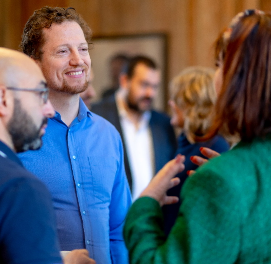When quality decisions are made efficiently, team members are willing to actively support and engage in the endpoint. This buy-in creates a critical momentum, avoiding the sense of limbo that can linger when decision making is postponed or unclear.
What makes effective decision making in a virtual setting?
Clearly defined principles and effective decision making is particularly important in virtual settings. “If you’re sitting side-by-side you often get micro-signals that provide insight into whether team members agree or disagree,” says Peter Wall, TPC Associate. “But in a virtual setting, those signals and spontaneous opportunities to check agreement are absent.” So how can you be sure decision making remains effective?
Clarity
Before embarking on the decision-making process, a team leader must clarify expectations. Peter explains there can often be confusion as to whether teams need to take a debating approach where multiple perspectives are discussed before a decision is agreed, or if a decision just needs to be made, implemented and accepted, regardless of the degree of consensus.
“Also consider how important it is to get the decision perfectly right the first time,” says Charles Brook, Founder and Managing Partner at TPC Leadership. “Do you need all the information and data upfront, or should you take more of a prototyping perspective, get minimum buyable product information, take action and then move it forward when you’ve got more data available?”
It can be tempting to make a decision and move on, but if the decision hasn’t been recorded and articulated clearly there can be a loss of momentum. Peter explains that once a decision has been made, team leaders must “clarify accountability, timescales and follow-up mechanisms” to ensure the outcome of the decision is realised.
“There’s no greater waste of time than when a decision is constantly revisited simply because someone disagreed with it in the first place,” says Peter. Be clear about what circumstances would necessitate a decision being reconsidered. If something’s materially changed, for example, there is legitimate justification for re-engaging in the debate.
Alignment
“Building alignment, buy-in and commitment is key to effective decision making,” says Charles. “Team members need to feel involved and allied with the decision in order to fully commit and engage.”
Make sure you create enough space to check alignment — in a virtual setting this may take the form of direct questions to every team member.
The best team leaders will have strategies to handle differences of opinion — something to be expected in any team. “Create a space where it’s okay for people to have their say and articulate if they see things differently,” says Peter. Allow all opinions onto the table but be clear about mechanisms for settling division.
Timeliness
Timeliness is essential to effective decision making. “Often there’s a thorny topic hovering in the background — everyone knows it’s going to be contentious but it’s number 7 on the agenda,” says Peter. “By the time we get to it there’s not enough time, so either we deal with it badly or defer it to the following meeting.”
Team leaders should also allow time to cater for different working styles. “While some people will turn up on the day willing to throw themselves into discussion, others will want time to think and prepare,” Peter explains. He suggests giving team members advance notice of the topic, goals and any data analysis that might drive the decision.
What’s the ROI of effective decision making?
One of the biggest sources of frustration in any team is wasting time — the notion of going round in circles and revisiting decisions. “Think about the amount of time you’d get back if you improved your decision-making process by just 10%,” says Peter. “That time can then be used elsewhere,” adds Charles, “building relationships, having fun or doing more.”
If you’d like to sign-up for our free virtual teams training modules you can register here.
Looking to sharpen decision making in your virtual teams? Get in touch with us to find out how we can help.





